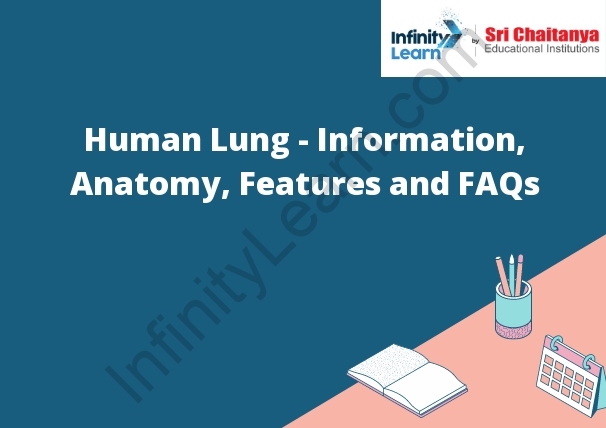Table of Contents
Introduction to Human Lung; Information about Lungs – Anatomy;Function of Lungs
The human lung is a pair of organs located in the chest cavity on either side of the heart. Each lung is divided into lobes, and the lobes are further divided into segments. The left lung has two lobes, and the right lung has three lobes. The lungs are responsible for the exchange of oxygen and carbon dioxide between the atmosphere and the bloodstream.
The lungs are surrounded by a thin membrane called the pleura. The pleura is divided into two layers, the parietal layer and the visceral layer. The parietal layer is attached to the inside of the chest wall, and the visceral layer is attached to the lungs. The pleura helps to protect the lungs and produces a thin film of fluid that lubricates the lungs and helps them to expand and contract.
The lungs are composed of a network of air sacs called alveoli. The alveoli are the site of gas exchange between the lungs and the bloodstream. The alveoli are surrounded by a network of capillaries, and the capillaries are in turn surrounded by a network of airways. The airways are divided into two types: the conducting airways and the respiratory airways. The conducting airways are the large airways that carry air to the alveoli, and the respiratory airways are the small airways that carry air from the alveoli to the lungs.
The human lungs are innervated by the

Right Lung
The right lung is larger than the left lung because it has to accommodate more space for the heart. The right lung has three lobes, while the left lung has only two. The right lung is also divided into two sections by a vertical fissure. The right lung is supplied by the right bronchus, which arises from the trachea. The right lung is drained by the right atrium of the heart.
Left Lung
The left lung is smaller than the right lung because the heart takes up space in the left side of the chest. The left lung has three lobes: the superior, middle, and inferior lobes. The left lung is also divided into an upper and lower part by the oblique fissure.
Features of Lungs
The lungs are a pair of organs in the chest that are responsible for respiration – the process of breathing in and out. The lungs are filled with small sacs called alveoli, which are covered in tiny blood vessels called capillaries. When you breathe in, the air passes through the nose and mouth, down the throat and into the lungs. The air passes through the alveoli, where the oxygen in the air is absorbed into the blood. The carbon dioxide in the blood is then expelled from the lungs when you breathe out.







